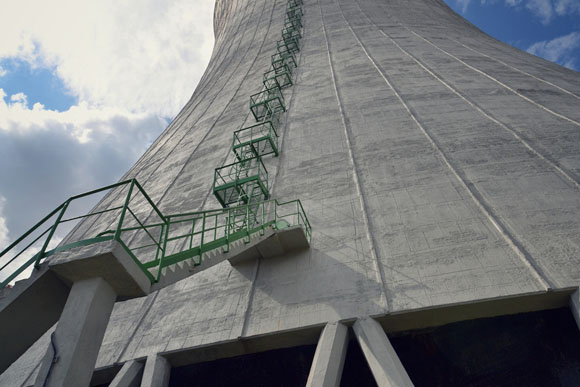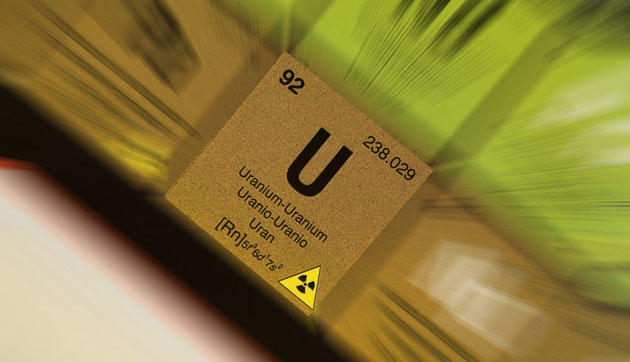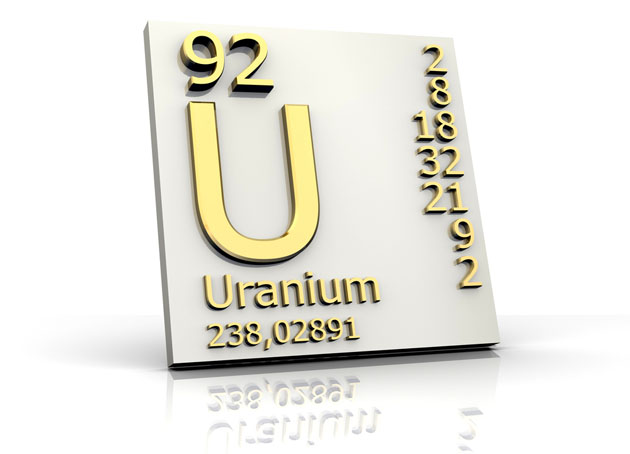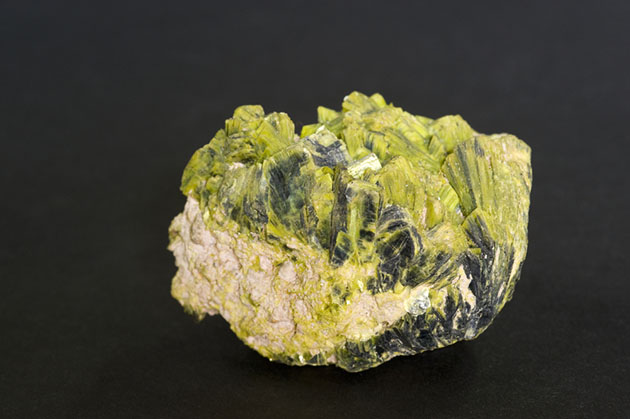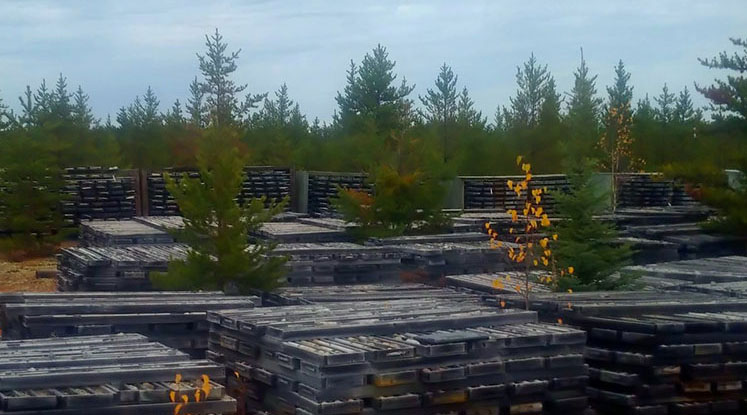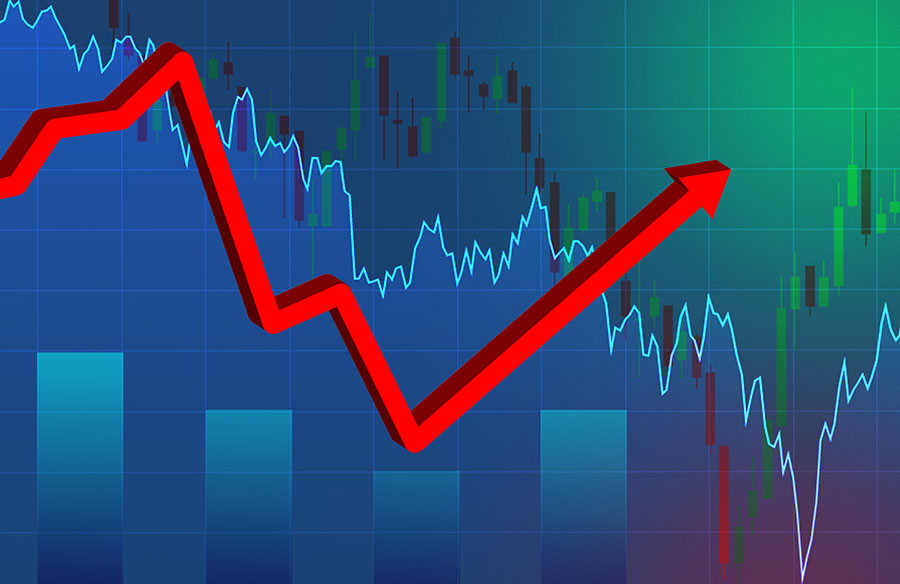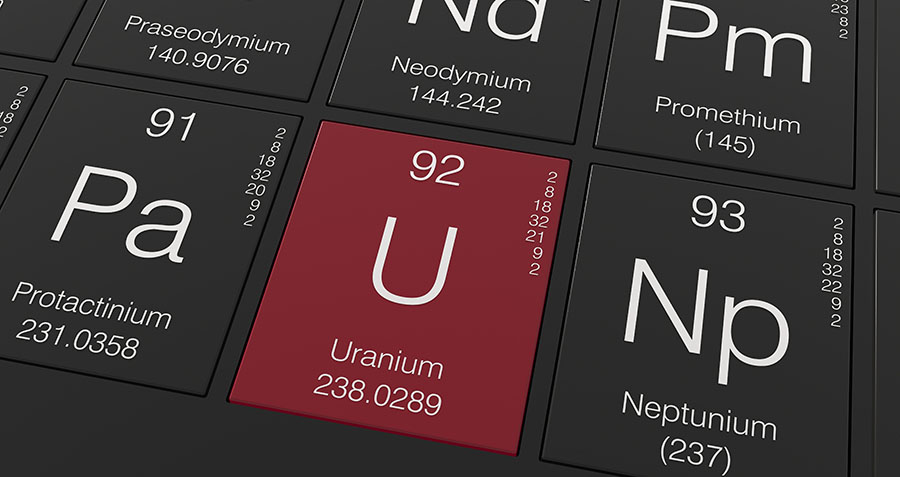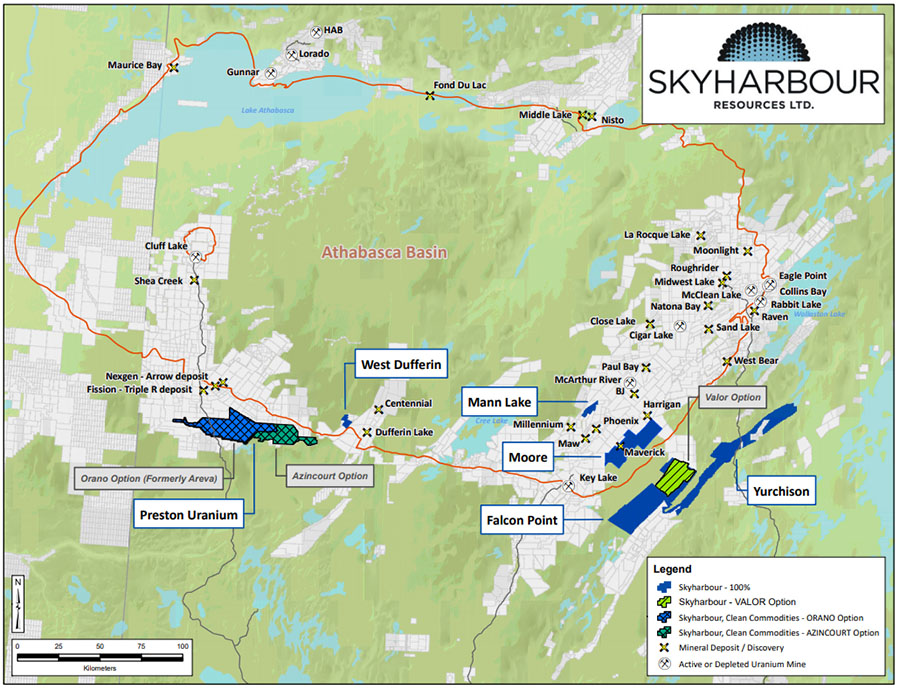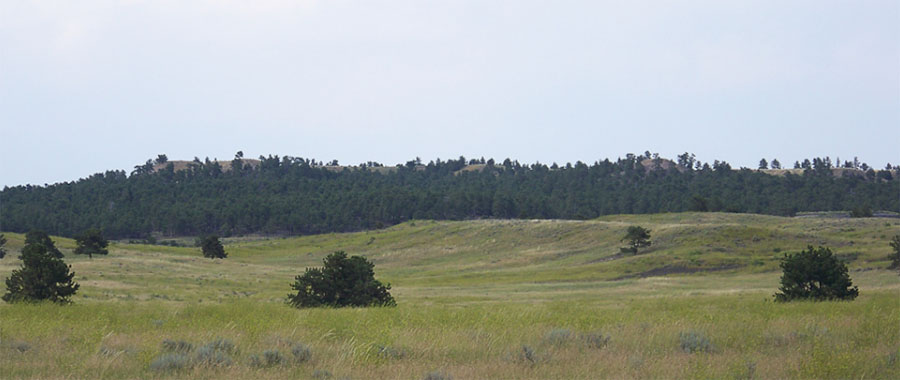Why I Remain a Uranium Bull
Source: Mickey Fulp, Mercenary Geologist (3/21/11)
"We desperately need a viable domestic uranium industry."
I've been calling uranium "The Next Big Thing" for the past several months. True to my contrarian nature, I first went bullish on uranium in January 2009 at market lows. Little did I know that it would take 18 months for the spot price of uranium to start an exponential move up. From July 2010 to early February 2011, the trade increased from $40.75 to $73 a pound for a gain of nearly 80%.
An unpredictable natural disaster that actually has made the energy metal the next big thing now confronts the world. The Fukushima nuclear complex survived the fifth largest earthquake since 1900 with a magnitude of 8.9 on the Richter scale. However, the reactors were unable to withstand the resulting tsunami that wiped out back¬up electrical power and damaged essential cooling systems. Now we are facing the second worst incident in the 57-year history of nuclear power generation.
World markets melted down (pun intended) and ran on emotion and panic for the first three days of the past week. We've had a rally in New York over the last two days. There is still little known about the overall situation at Fukushima and it will take much more time for this to play out. However, we know it will not be a repeat of Chernobyl because there was no containment vessel surrounding the defectively designed Russian reactor. All radiation from that human-caused accident in 1986 was released directly to the ground and air. Fukushima has well-engineered containment vessels and most radiation will be confined to the immediate vicinity.
As a result of the incident, the spot price of uranium dropped over 20 % in two weeks and is now at $53/lb after going as low as $49. The drop is understandable because there were many diverse buyers including utilities, producers, traders, and speculators last week and the latter two groups fled the market this week. Since most uranium is sold via long term contracts, the spot market is thinly traded, illiquid, and subject to volatility. I expect additional weakness in the short term as the traders and hedge fund speculators avoid the uranium market. This development will be of severe consequence to high-cost producers that have unhedged production.
Exacerbating the situation was last week's Department of Energy (DOE) quarterly sale of almost 1 million pounds (1 Mlb.) into the spot market that had already driven the price from $73 to $66.50. Obama's DOE will sell more than five million pounds this year violating the terms of a 2008 deal with the Bush Administration and the uranium producers of America that scheduled 3.3 million pounds of inventory sales in 2011. That agreement also allowed DOE to sell stockpiles for initial cores of new reactors.
It will surprise most of you to learn that the DOE's uranium is not sold directly onto the spot market but bartered for services by union contractors cleaning up the old Portsmouth, Ohio uranium-enrichment facility. The contractor then puts the material into the market and proceeds are used to pay union employees. The DOE entered into this convoluted "barter for services" relationship in order to circumvent turning receipts over to the U.S. Treasury. Instead DOE can use the money for its programs without going through the Congressional appropriations process.
There will be some serious fallout (pun intended) in uranium demand because of the Fukushima plant failures. The reactors with control rod problems are done and will be cooled down, sealed off and contained. This will take a minor amount of annual demand off the market.
Japan has 11 reactors that were shut down after the earthquake and tsunami. Some of those will come back on line after safety reviews are completed. Four new generation reactors are under construction and the fate of these plants is unknown. Certainly all plant locations and designs in Japan will be scrutinized in light of the recent disaster.
Germany, where anti-nuclear power sentiment is among the strongest in the world, has announced mothballing of seven reactors for a minimum three months. Time will tell how long that can continue when electrical costs rise and if rolling brownouts occur in the nation.
Other western and northern European countries with anti-nuclear lobbies that were previously considering easing restrictions on nuclear power seem unlikely to embrace its use now.
However, 425 of the world's 443 nuclear power reactors are still operating. China, Russia, South Korea and the United States have announced they will press forward with ambitious plans for increased electricity output from nuclear power. These countries have been driving the nuclear renaissance along with India. It seems certain there will be delays in plant design, permitting and construction around the world. Capital costs of new plants will increase as we learn from mistakes made at Fukushima.
In 2010, mines supplied about 70% of overall uranium demand. For years the shortfall of mine supply has been met by sovereign stockpiles and secondary supplies, mainly through conversion of Russian heavy enriched uranium into nuclear reactor fuel. Stockpiles and secondary supply are declining rapidly with the Russian program scheduled for termination in 2013. Most new sources of uranium are mined in unstable and corrupt countries that are unfriendly to the West and prone to supply disruption.
Nuclear energy is a cornerstone of world electrical output at 13%–14%. The U.S., France and Japan account for about 50% of this power.
In the United States, nuclear power accounts for 20% of generated electricity. Along with water, coal, oil and natural gas, it is an important source of on demand baseload electricity. We aren't building any more domestic dams in the USA and coal and petroleum products are major sources of carbon emissions.
We require alternative sources of electrical energy in America and they will certainly contribute to any comprehensive national energy plan. However, there are inherent problems with alternative energies such as solar and wind for electrical production. The sun secedes to the moon for 12 hours every day and sometimes it's cloudy. The wind only blows 365, 24 and 7 offshore and in Wyoming. Solar and wind technologies cannot produce constant and reliable base load electrical power.
Alternative sources are uneconomic because there is currently no efficient and economic way of storing electricity. Solar and wind require substantial government subsidies and tax credits to compete on a per-kilowatt cost basis.
Green energy technologies are favored by the environmentally conscious. Nevertheless, there are pending lawsuits by NGOs challenging new solar plants in the California desert and offshore wind farms on the East Coast.
If it is left up to the NIMBY's, we would all freeze in the dark.
We produce only four Mlb. uranium a year in the United States, or about 7% of our annual domestic use of 55 Mlb. Current USA operations are in-situ recovery (ISR) well fields. Our largest domestic uranium mine, Christiansen Ranch in Wyoming, is controlled by the Russian State uranium company (ARMZ) through its majority ownership of Uranium One.
We desperately need a viable domestic uranium industry.
One of my favorite companies in domestic uranium space is Uranium Energy Corp (NYSE.A:UEC), which recently opened a new ISR mine in South Texas. UEC has ambitious plans to gradually increase production to one million pounds per year through several satellite operations feeding a central processing plant. The company's initial operating costs at the Palangana mine are a very low $18/lb. It has 12 million pounds of historic and 43¬101 qualified resources in all categories in South Texas. Additionally, it controls another 23 million pounds of historic resources in past-producing districts of New Mexico, Wyoming and Colorado. Uranium Energy Corp has experienced people, a tightly held share structure and $33 million in working capital.
Of course, you already know my choice among the companies that I cover. Strathmore Minerals Corp. (TSX:STM; OTCQX:STHJF) is conducting a feasibility study at its large, high-grade Roca Honda underground deposit in the Ambrosia Lake district of the Grants Mineral Belt. In the Gas Hills of Wyoming, Strathmore anticipates submitting an open pit mine permit application within a year. The company continues to pursue divestiture of four non¬core uranium development assets in New Mexico and four exploration projects in Wyoming. I will write a musing on Strathmore in the near future.
Please note that I am a shareholder of both Uranium Energy Corp. and Strathmore Minerals and Strathmore is a website sponsor.
On another note, I lightened exposure to my most speculative of uranium stock holdings, junior uranium explorers in the Athabasca Basin, by taking admittedly smaller profits on two companies this past week.
All facets of the worldwide nuclear power industry, including sovereign companies, utilities, index funds, manufacturers and suppliers, uranium producers, developers and explorers, were hit by panic selling and market turmoil this week. They likely will be strongly oversold and present good buying opportunities in the short term. I personally intend to buy a select U.S. producer on weakness. In my opinion, it is still too early to make a bottom call on the sector. However, putting in stink bids and patiently accumulating as the market rises and falls is always a legitimate strategy if you like the long-term viability of an exploration or mining company.
Ciao for now,
Mickey Fulp, Mercenary Geologist
[email protected]
The Mercenary Geologist Michael S. "Mickey" Fulp is a certified professional geologist with a B.Sc. Earth Sciences with honor from the University of Tulsa, and M.Sc. Geology from the University of New Mexico. Mickey has over 30 years experience as an exploration geologist searching for economic deposits of base and precious metals, industrial minerals, uranium, coal, oil and gas, and water in North and South America, Europe, and Asia.
Mickey has worked for junior explorers, major mining companies, private companies, and investors as a consulting economic geologist for the past 23 years, specializing in geological mapping, property evaluation, and business development. In addition to Mickey's professional credentials and experience, he is high¬-altitude proficient, and is bilingual in English and Spanish. From 2003 to 2006, he made four outcrop ore discoveries in Peru, Nevada, Chile and British Columbia. Mickey is well known and highly respected throughout the mining and exploration community due to his ongoing work as an analyst, writer and speaker.
Acknowledgements: Jon Indall provided clarification on the DOE uranium inventory sales. Jeff Stuart edits my musings.
Disclaimer: I am a shareholder of Uranium Energy Corp and Strathmore Minerals Corp; the latter sponsors my website. I am not a certified financial analyst, broker or professional qualified to offer investment advice. Nothing in a report, commentary, this website, interview and other content constitutes or can be construed as investment advice or an offer or solicitation to buy or sell stock. Information is obtained from research of public documents and content available on the company's website, regulatory filings, various stock exchange websites and stock information services, through discussions with company representatives, agents, other professionals and investors, and field visits. While the information is believed to be accurate and reliable, it is not guaranteed or implied to be so. The information may not be complete or correct; it is provided in good faith but without any legal responsibility or obligation to provide future updates. I accept no responsibility, or assume any liability, whatsoever, for any direct, indirect or consequential loss arising from the use of the information. The information contained in a report, commentary, this website, interview and other content is subject to change without notice, may become outdated and will not be updated. A report, commentary, this website, interview and other content reflect my personal opinions and views and nothing more. All content of this website is subject to international copyright protection and no part or portion of this website, report, commentary, interview, and other content may be altered, reproduced, copied, emailed, faxed, or distributed in any form without the express written consent of Michael S. (Mickey) Fulp, Mercenary Geologist.com LLC.
Copyright © 2011 MercenaryGeologist.com. LLC All Rights Reserved.
An unpredictable natural disaster that actually has made the energy metal the next big thing now confronts the world. The Fukushima nuclear complex survived the fifth largest earthquake since 1900 with a magnitude of 8.9 on the Richter scale. However, the reactors were unable to withstand the resulting tsunami that wiped out back¬up electrical power and damaged essential cooling systems. Now we are facing the second worst incident in the 57-year history of nuclear power generation.
World markets melted down (pun intended) and ran on emotion and panic for the first three days of the past week. We've had a rally in New York over the last two days. There is still little known about the overall situation at Fukushima and it will take much more time for this to play out. However, we know it will not be a repeat of Chernobyl because there was no containment vessel surrounding the defectively designed Russian reactor. All radiation from that human-caused accident in 1986 was released directly to the ground and air. Fukushima has well-engineered containment vessels and most radiation will be confined to the immediate vicinity.
As a result of the incident, the spot price of uranium dropped over 20 % in two weeks and is now at $53/lb after going as low as $49. The drop is understandable because there were many diverse buyers including utilities, producers, traders, and speculators last week and the latter two groups fled the market this week. Since most uranium is sold via long term contracts, the spot market is thinly traded, illiquid, and subject to volatility. I expect additional weakness in the short term as the traders and hedge fund speculators avoid the uranium market. This development will be of severe consequence to high-cost producers that have unhedged production.
Exacerbating the situation was last week's Department of Energy (DOE) quarterly sale of almost 1 million pounds (1 Mlb.) into the spot market that had already driven the price from $73 to $66.50. Obama's DOE will sell more than five million pounds this year violating the terms of a 2008 deal with the Bush Administration and the uranium producers of America that scheduled 3.3 million pounds of inventory sales in 2011. That agreement also allowed DOE to sell stockpiles for initial cores of new reactors.
It will surprise most of you to learn that the DOE's uranium is not sold directly onto the spot market but bartered for services by union contractors cleaning up the old Portsmouth, Ohio uranium-enrichment facility. The contractor then puts the material into the market and proceeds are used to pay union employees. The DOE entered into this convoluted "barter for services" relationship in order to circumvent turning receipts over to the U.S. Treasury. Instead DOE can use the money for its programs without going through the Congressional appropriations process.
There will be some serious fallout (pun intended) in uranium demand because of the Fukushima plant failures. The reactors with control rod problems are done and will be cooled down, sealed off and contained. This will take a minor amount of annual demand off the market.
Japan has 11 reactors that were shut down after the earthquake and tsunami. Some of those will come back on line after safety reviews are completed. Four new generation reactors are under construction and the fate of these plants is unknown. Certainly all plant locations and designs in Japan will be scrutinized in light of the recent disaster.
Germany, where anti-nuclear power sentiment is among the strongest in the world, has announced mothballing of seven reactors for a minimum three months. Time will tell how long that can continue when electrical costs rise and if rolling brownouts occur in the nation.
Other western and northern European countries with anti-nuclear lobbies that were previously considering easing restrictions on nuclear power seem unlikely to embrace its use now.
However, 425 of the world's 443 nuclear power reactors are still operating. China, Russia, South Korea and the United States have announced they will press forward with ambitious plans for increased electricity output from nuclear power. These countries have been driving the nuclear renaissance along with India. It seems certain there will be delays in plant design, permitting and construction around the world. Capital costs of new plants will increase as we learn from mistakes made at Fukushima.
In 2010, mines supplied about 70% of overall uranium demand. For years the shortfall of mine supply has been met by sovereign stockpiles and secondary supplies, mainly through conversion of Russian heavy enriched uranium into nuclear reactor fuel. Stockpiles and secondary supply are declining rapidly with the Russian program scheduled for termination in 2013. Most new sources of uranium are mined in unstable and corrupt countries that are unfriendly to the West and prone to supply disruption.
Nuclear energy is a cornerstone of world electrical output at 13%–14%. The U.S., France and Japan account for about 50% of this power.
In the United States, nuclear power accounts for 20% of generated electricity. Along with water, coal, oil and natural gas, it is an important source of on demand baseload electricity. We aren't building any more domestic dams in the USA and coal and petroleum products are major sources of carbon emissions.
We require alternative sources of electrical energy in America and they will certainly contribute to any comprehensive national energy plan. However, there are inherent problems with alternative energies such as solar and wind for electrical production. The sun secedes to the moon for 12 hours every day and sometimes it's cloudy. The wind only blows 365, 24 and 7 offshore and in Wyoming. Solar and wind technologies cannot produce constant and reliable base load electrical power.
Alternative sources are uneconomic because there is currently no efficient and economic way of storing electricity. Solar and wind require substantial government subsidies and tax credits to compete on a per-kilowatt cost basis.
Green energy technologies are favored by the environmentally conscious. Nevertheless, there are pending lawsuits by NGOs challenging new solar plants in the California desert and offshore wind farms on the East Coast.
If it is left up to the NIMBY's, we would all freeze in the dark.
We produce only four Mlb. uranium a year in the United States, or about 7% of our annual domestic use of 55 Mlb. Current USA operations are in-situ recovery (ISR) well fields. Our largest domestic uranium mine, Christiansen Ranch in Wyoming, is controlled by the Russian State uranium company (ARMZ) through its majority ownership of Uranium One.
We desperately need a viable domestic uranium industry.
One of my favorite companies in domestic uranium space is Uranium Energy Corp (NYSE.A:UEC), which recently opened a new ISR mine in South Texas. UEC has ambitious plans to gradually increase production to one million pounds per year through several satellite operations feeding a central processing plant. The company's initial operating costs at the Palangana mine are a very low $18/lb. It has 12 million pounds of historic and 43¬101 qualified resources in all categories in South Texas. Additionally, it controls another 23 million pounds of historic resources in past-producing districts of New Mexico, Wyoming and Colorado. Uranium Energy Corp has experienced people, a tightly held share structure and $33 million in working capital.
Of course, you already know my choice among the companies that I cover. Strathmore Minerals Corp. (TSX:STM; OTCQX:STHJF) is conducting a feasibility study at its large, high-grade Roca Honda underground deposit in the Ambrosia Lake district of the Grants Mineral Belt. In the Gas Hills of Wyoming, Strathmore anticipates submitting an open pit mine permit application within a year. The company continues to pursue divestiture of four non¬core uranium development assets in New Mexico and four exploration projects in Wyoming. I will write a musing on Strathmore in the near future.
Please note that I am a shareholder of both Uranium Energy Corp. and Strathmore Minerals and Strathmore is a website sponsor.
On another note, I lightened exposure to my most speculative of uranium stock holdings, junior uranium explorers in the Athabasca Basin, by taking admittedly smaller profits on two companies this past week.
All facets of the worldwide nuclear power industry, including sovereign companies, utilities, index funds, manufacturers and suppliers, uranium producers, developers and explorers, were hit by panic selling and market turmoil this week. They likely will be strongly oversold and present good buying opportunities in the short term. I personally intend to buy a select U.S. producer on weakness. In my opinion, it is still too early to make a bottom call on the sector. However, putting in stink bids and patiently accumulating as the market rises and falls is always a legitimate strategy if you like the long-term viability of an exploration or mining company.
Ciao for now,
Mickey Fulp, Mercenary Geologist
[email protected]
The Mercenary Geologist Michael S. "Mickey" Fulp is a certified professional geologist with a B.Sc. Earth Sciences with honor from the University of Tulsa, and M.Sc. Geology from the University of New Mexico. Mickey has over 30 years experience as an exploration geologist searching for economic deposits of base and precious metals, industrial minerals, uranium, coal, oil and gas, and water in North and South America, Europe, and Asia.
Mickey has worked for junior explorers, major mining companies, private companies, and investors as a consulting economic geologist for the past 23 years, specializing in geological mapping, property evaluation, and business development. In addition to Mickey's professional credentials and experience, he is high¬-altitude proficient, and is bilingual in English and Spanish. From 2003 to 2006, he made four outcrop ore discoveries in Peru, Nevada, Chile and British Columbia. Mickey is well known and highly respected throughout the mining and exploration community due to his ongoing work as an analyst, writer and speaker.
Acknowledgements: Jon Indall provided clarification on the DOE uranium inventory sales. Jeff Stuart edits my musings.
Disclaimer: I am a shareholder of Uranium Energy Corp and Strathmore Minerals Corp; the latter sponsors my website. I am not a certified financial analyst, broker or professional qualified to offer investment advice. Nothing in a report, commentary, this website, interview and other content constitutes or can be construed as investment advice or an offer or solicitation to buy or sell stock. Information is obtained from research of public documents and content available on the company's website, regulatory filings, various stock exchange websites and stock information services, through discussions with company representatives, agents, other professionals and investors, and field visits. While the information is believed to be accurate and reliable, it is not guaranteed or implied to be so. The information may not be complete or correct; it is provided in good faith but without any legal responsibility or obligation to provide future updates. I accept no responsibility, or assume any liability, whatsoever, for any direct, indirect or consequential loss arising from the use of the information. The information contained in a report, commentary, this website, interview and other content is subject to change without notice, may become outdated and will not be updated. A report, commentary, this website, interview and other content reflect my personal opinions and views and nothing more. All content of this website is subject to international copyright protection and no part or portion of this website, report, commentary, interview, and other content may be altered, reproduced, copied, emailed, faxed, or distributed in any form without the express written consent of Michael S. (Mickey) Fulp, Mercenary Geologist.com LLC.
Copyright © 2011 MercenaryGeologist.com. LLC All Rights Reserved.


